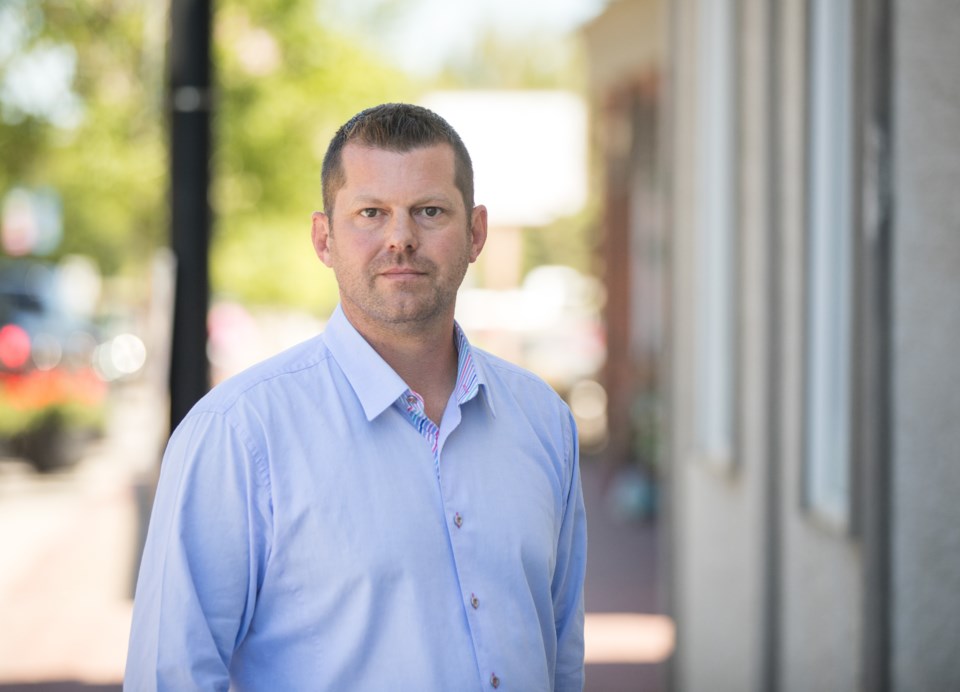Highwood's MLA said the referendum results show the majority of Albertans feel it's time for Canada to give the province a fair deal.
On Oct. 26, provincial and municipal results for the two referendum questions were released. Tallies showed a rather overwhelming yes from voters on the question of removing equalization payments from the constitution and a slim margin decided not to adopt year-round daylight savings time.
“As far as equalization goes, 61.7 per cent is a pretty powerful signal to us as legislators that the majority of Albertans feel that it’s time for Canada to consider a fair deal for Alberta,” said Highwood MLA RJ Sigurdson.
Okotoks, Foothills County, Black Diamond and Turner Valley all had majority ‘yes’ votes when it came to equalization. In Okotoks, 5,170 people voted yes to the provision and 2,006 voted no. The yes vote won by a landslide in the County – 3,370 yes, to 809 no. The margin in Black Diamond was a bit closer, but still substantial, with a count of 610 to 224. Turner Valley was in a similar spot with 480 yes votes and 218 no votes.
As far as the equalization referendum goes, 61.7 per cent of eligible individuals voted in favour of removing section 36 (2) of the Constitution Act, 1982 – which is the government of Canada’s commitment to making equalization payments – from the constitution.
Equalization is a process where taxes collected by the federal government are redistributed from higher-earning provinces to lower-earning ones, to ensure a basic level of service across the county.
Albertans generally pay more into the program than they get back in transfers due to high wages in the province.
“A majority – 62 per cent of Albertans – rejected the fundamentally unfair equalization program,” said Premier Jason Kenney during a press conference held following the release of the results. “It received majority support in virtually every region of the province – in large urban centres, mid-sized cities and in small rural communities.”
During the press conference, Kenney indicated that he would be tabling a motion in the legislature the same day – Oct. 26 – to ratify the results of the vote. According to the premier, the passing of this motion by the legislative assembly would formally begin the process of negotiating the constitutional amendment that would be necessary to implement these changes.
Sigurdson said that it is time for the prime minister to formally consider the change and arrange a meeting among premiers to begin negotiations.
“I just don’t think that Prime Minister Trudeau can ignore the mass majority of Albertans being unhappy with what’s currently going on,” he said. “So I hope he will honour those votes by sitting down with Alberta and working towards that fair deal.”
For equalization payments to be formally removed from the constitution, Alberta not only needs the cooperation of the federal government, but also a consensus among a minimum of seven provinces that represent over 50 per cent of the Canadian population.
The daylight savings time decision was nearly a tie – 49.9 per cent of voters indicated they would be in favour of adopting the change that would end the need to change clocks twice a year, while 50.1 per cent voted against the amendment.
Time change is not constitutionally-binding, and so the province has the power to make those amendments on its own.
When reached prior to the premier’s announcement, Sigurdson said he could not speak on behalf of Kenney but predicted that the province would be guided by the results of the vote and likely side with the narrow majority on the issue.
Like the province, local voters were a bit more conflicted when it came to the decision on daylight savings time. In the end, the County, Black Diamond and Turner Valley fell into the minority of Albertans – voting in favour of permanent daylight savings time.
The tally in Okotoks was a close one, as only 345 votes separated 'yes’ and ‘no.’ in the end, the majority of Okotokians expressed their desire not to make the change.
Also on the ballot during the vote were senate nominees.
Under the Canadian Constitution, senators are appointed by the Governor General at the advice of the prime minister. Without amendments to this piece of the constitution, voters do not have the power to elect senators. However, since 2016, all Canadians are eligible to put their name forward for a position. Those nominations are then reviewed by the independent Advisory Board for Senate Appointments, which provides recommendations to the prime minister.
“I think it’s very important to communicate to Albertans that we need to continue to put pressure on our federal representatives to make sure that our prime minister acknowledges and respects the decisions of Albertans moving forward through this process,” Sigurdson said.
While he indicated that the senate appointment process is well known by voters, that may not be exactly the case for all individuals.
Sigurdson said he plans to communicate with Highwood residents via social media and newsletters, what the next steps are for senate nominees as well as the equalization referendum.
There are currently two vacancies for Alberta senators, and the nominees with the most votes were Erika Barootes with the Conservative Party of Canada, Pam Davidson, also with the CPC, and Rick Bonnett, an Independent.
There were 1,118,828 individuals who cast their vote for senate nominees. However, a large portion of those – 212,936 – were ultimately rejected or left blank.


.png;w=120;h=80;mode=crop)

